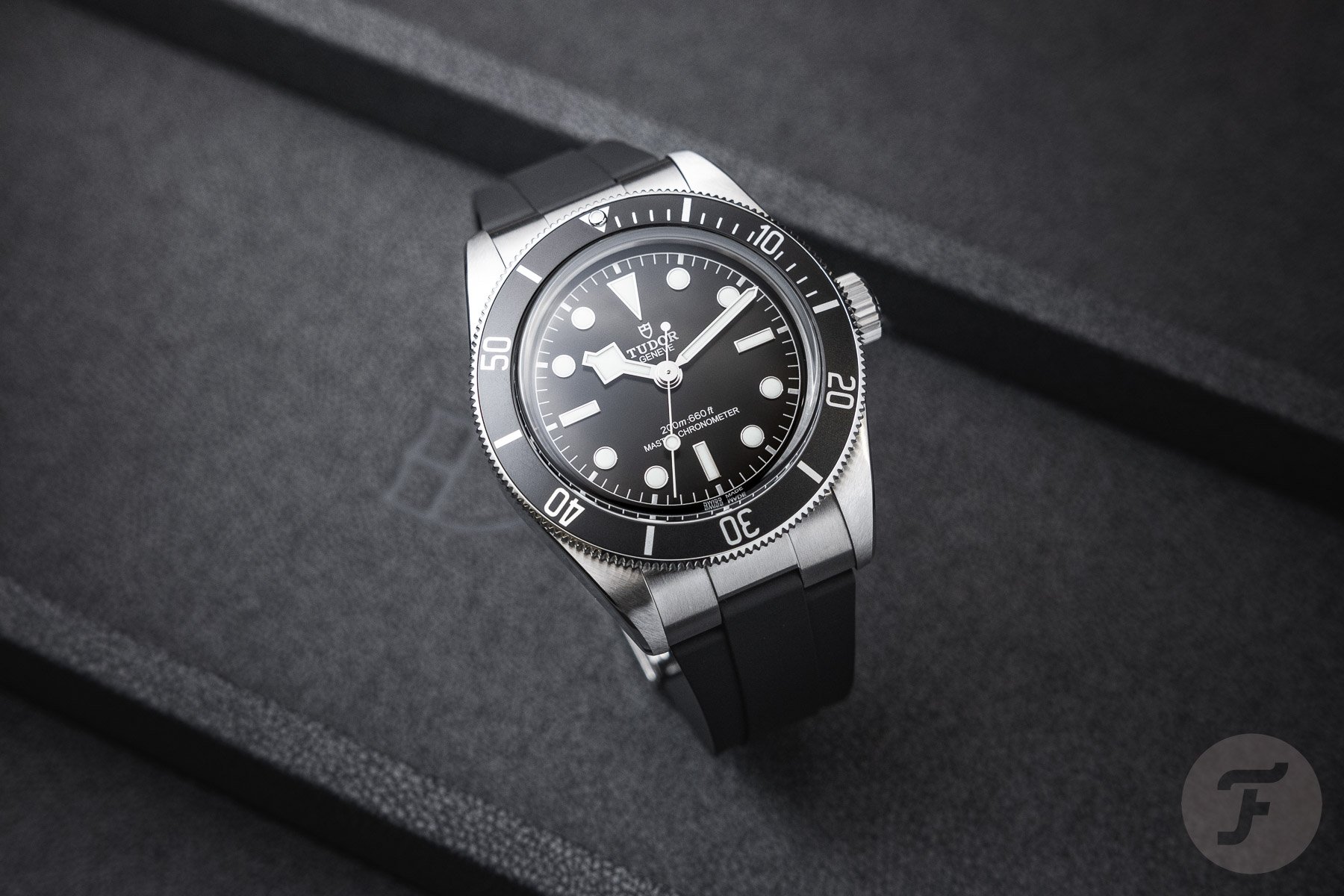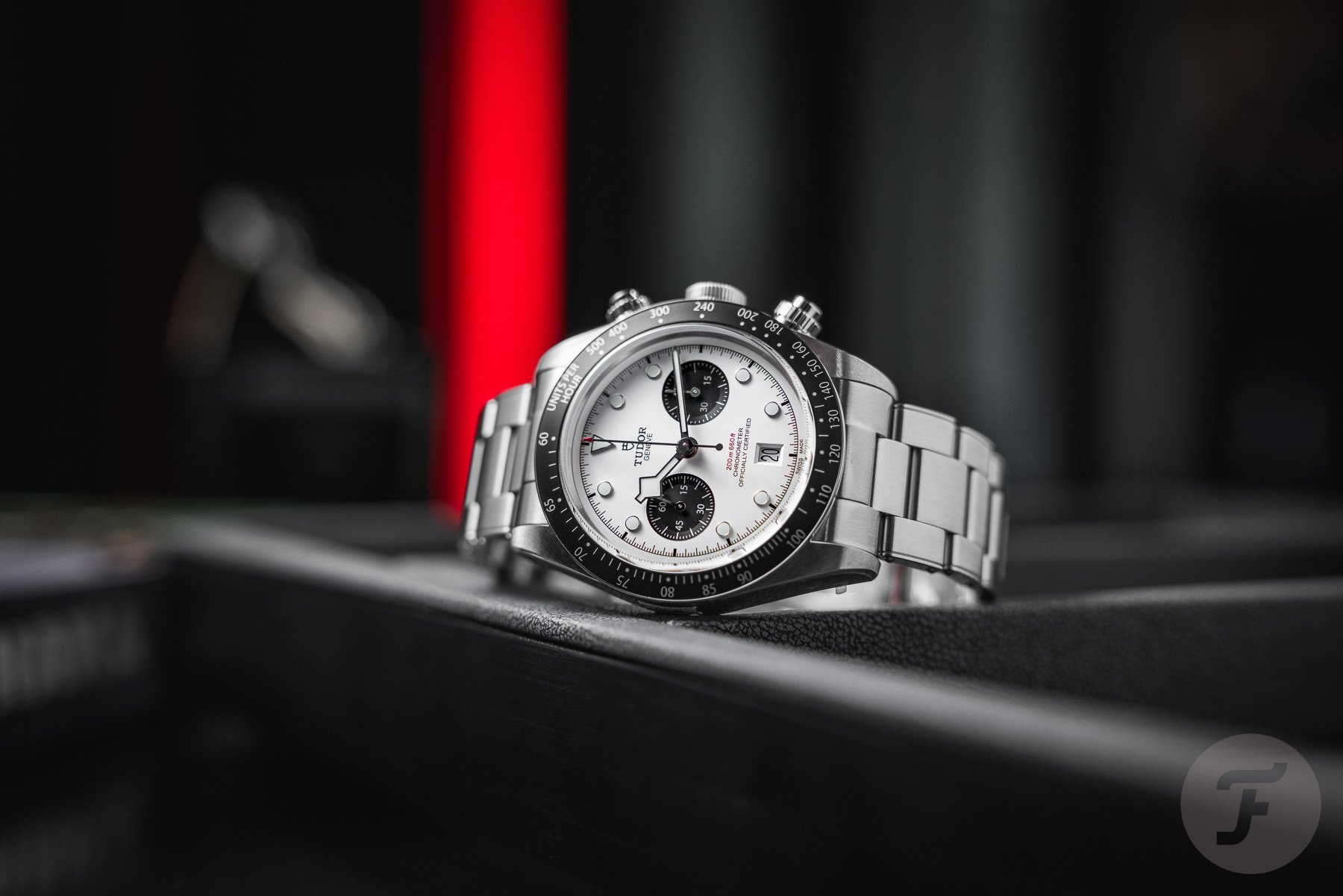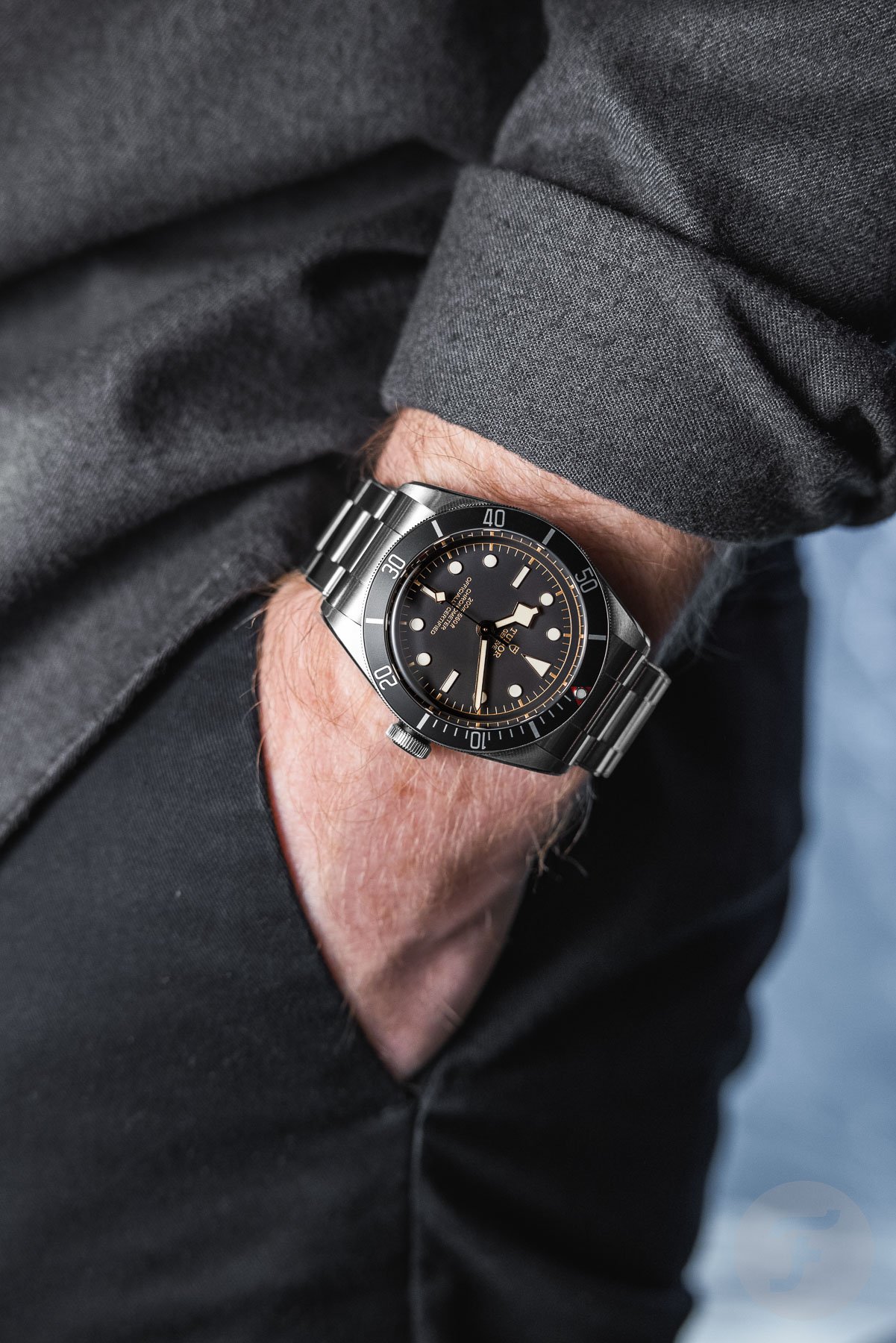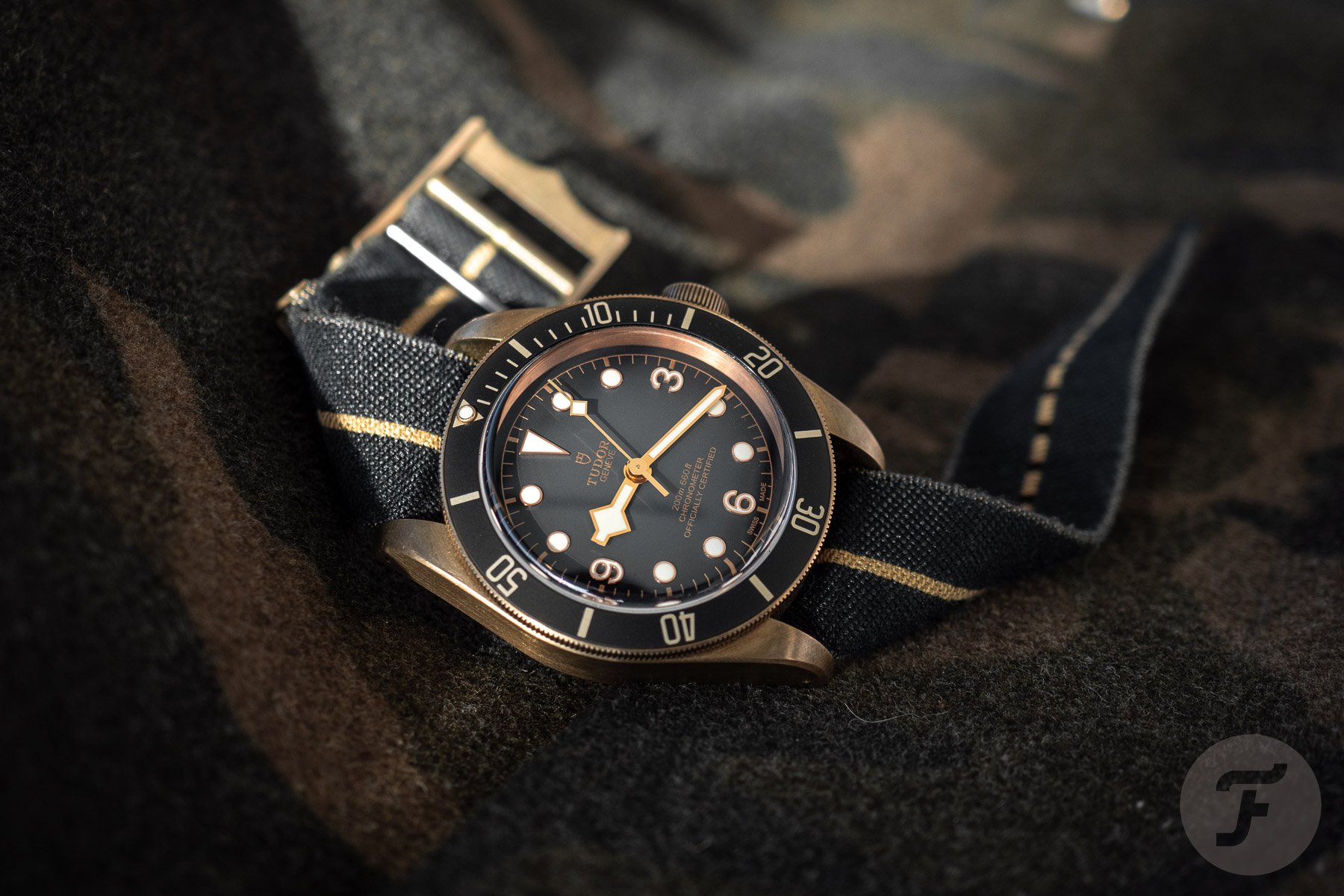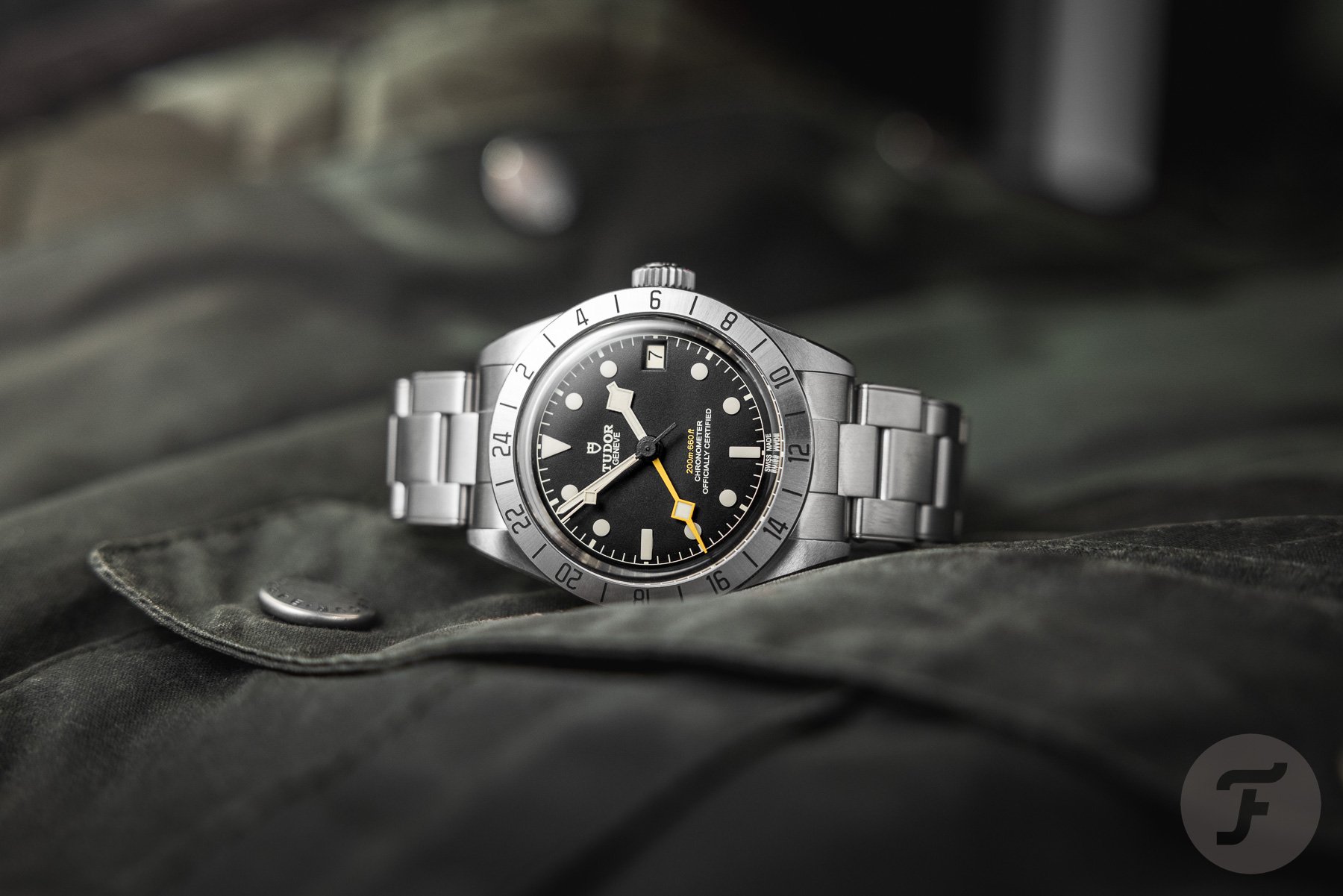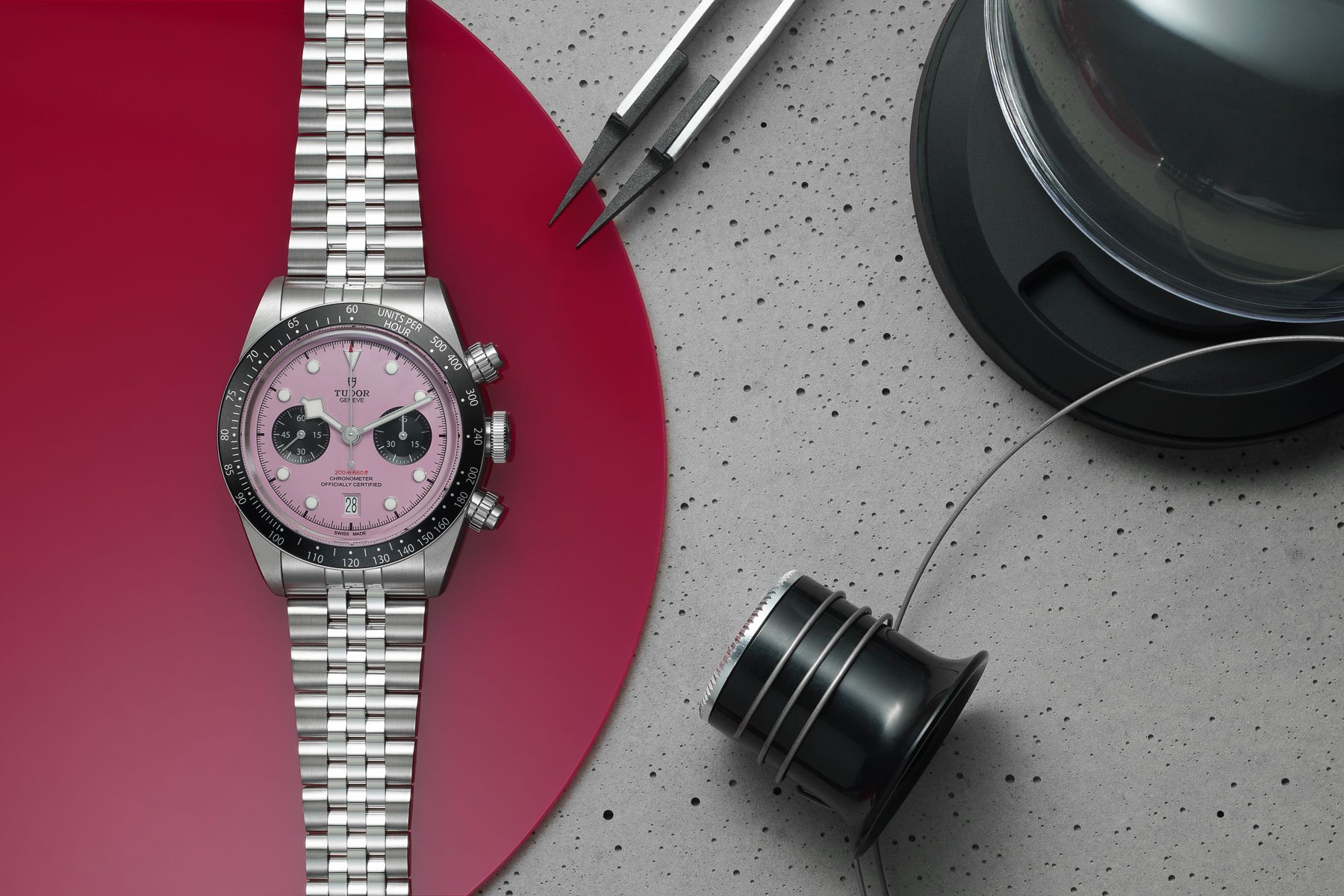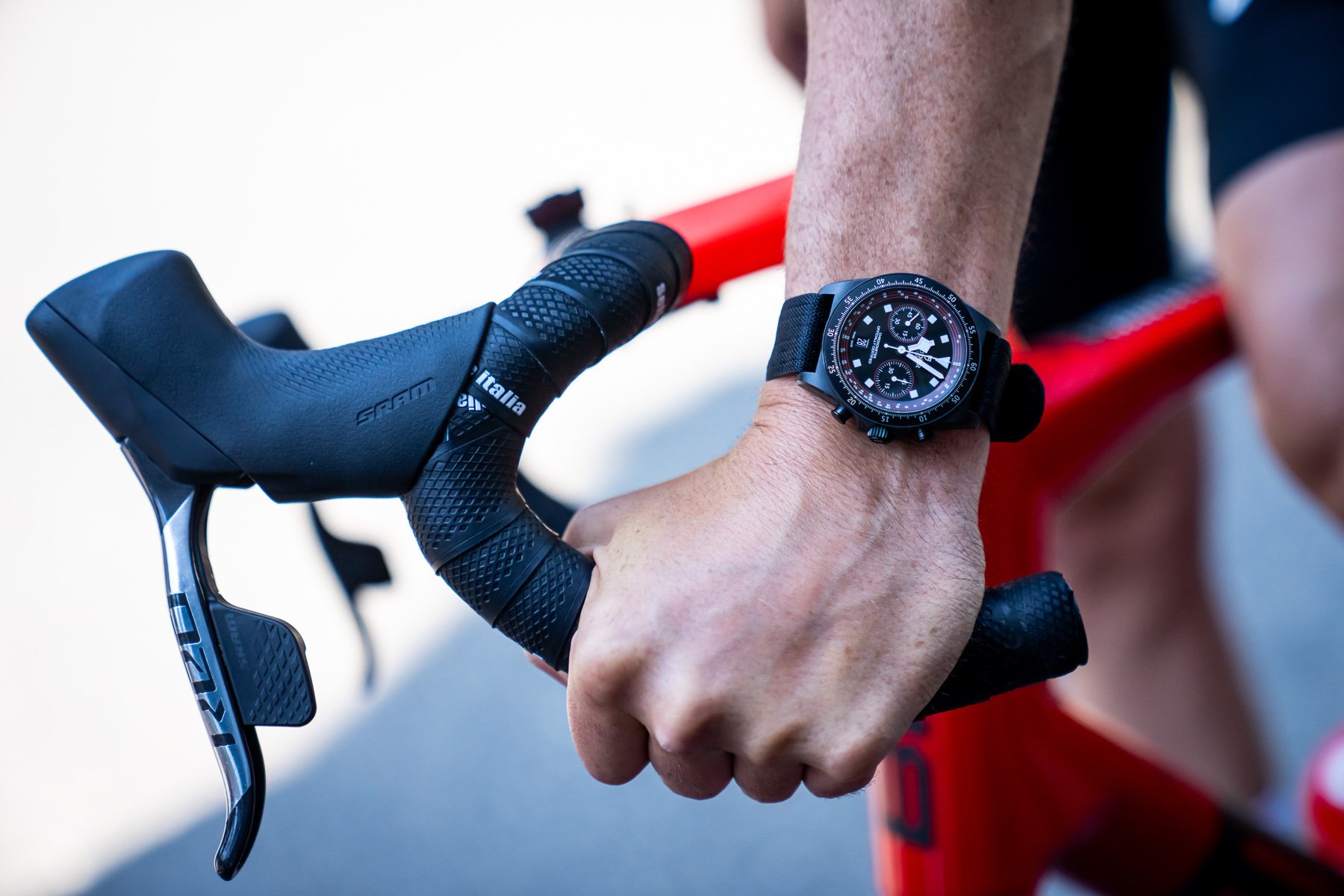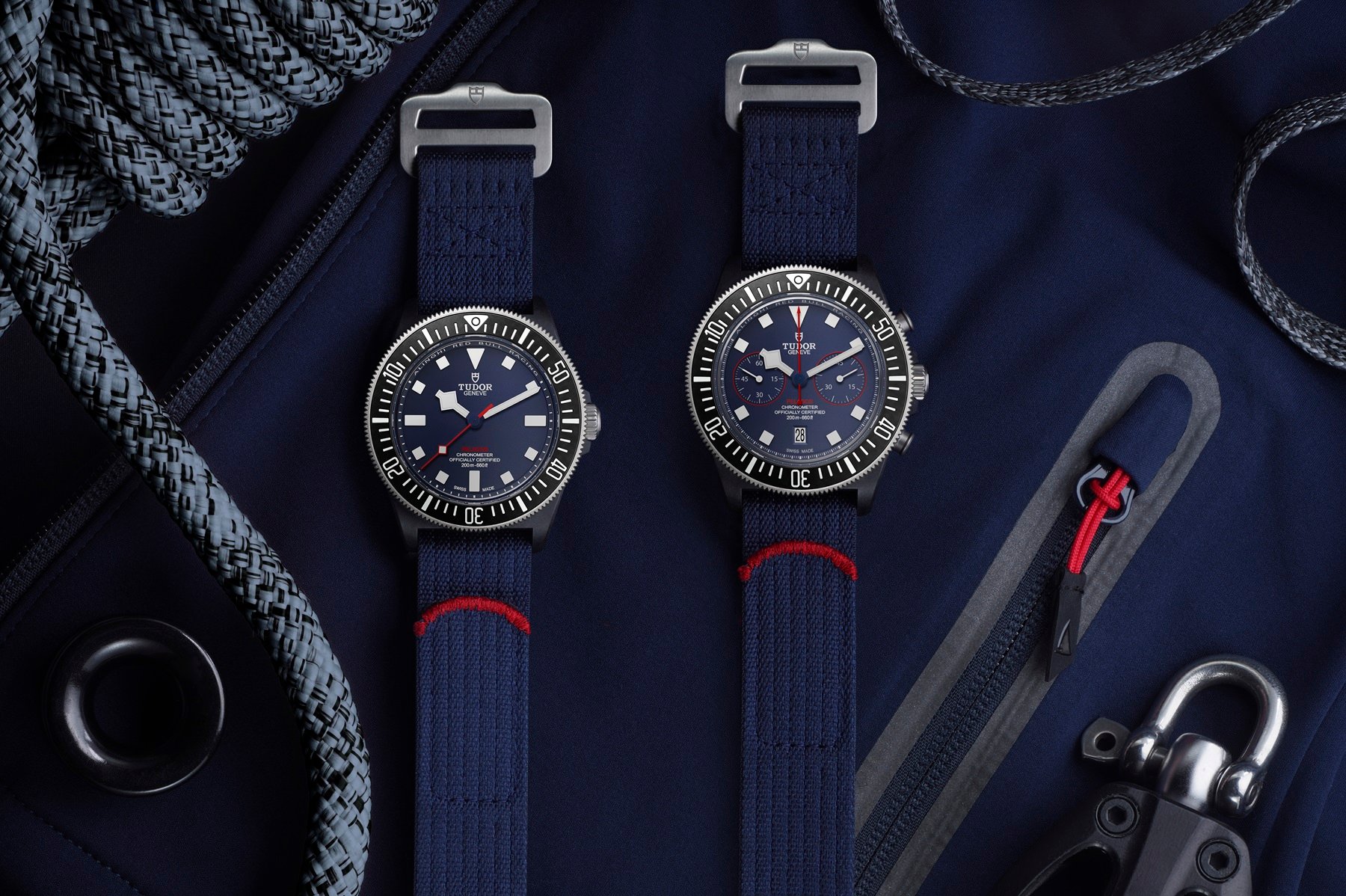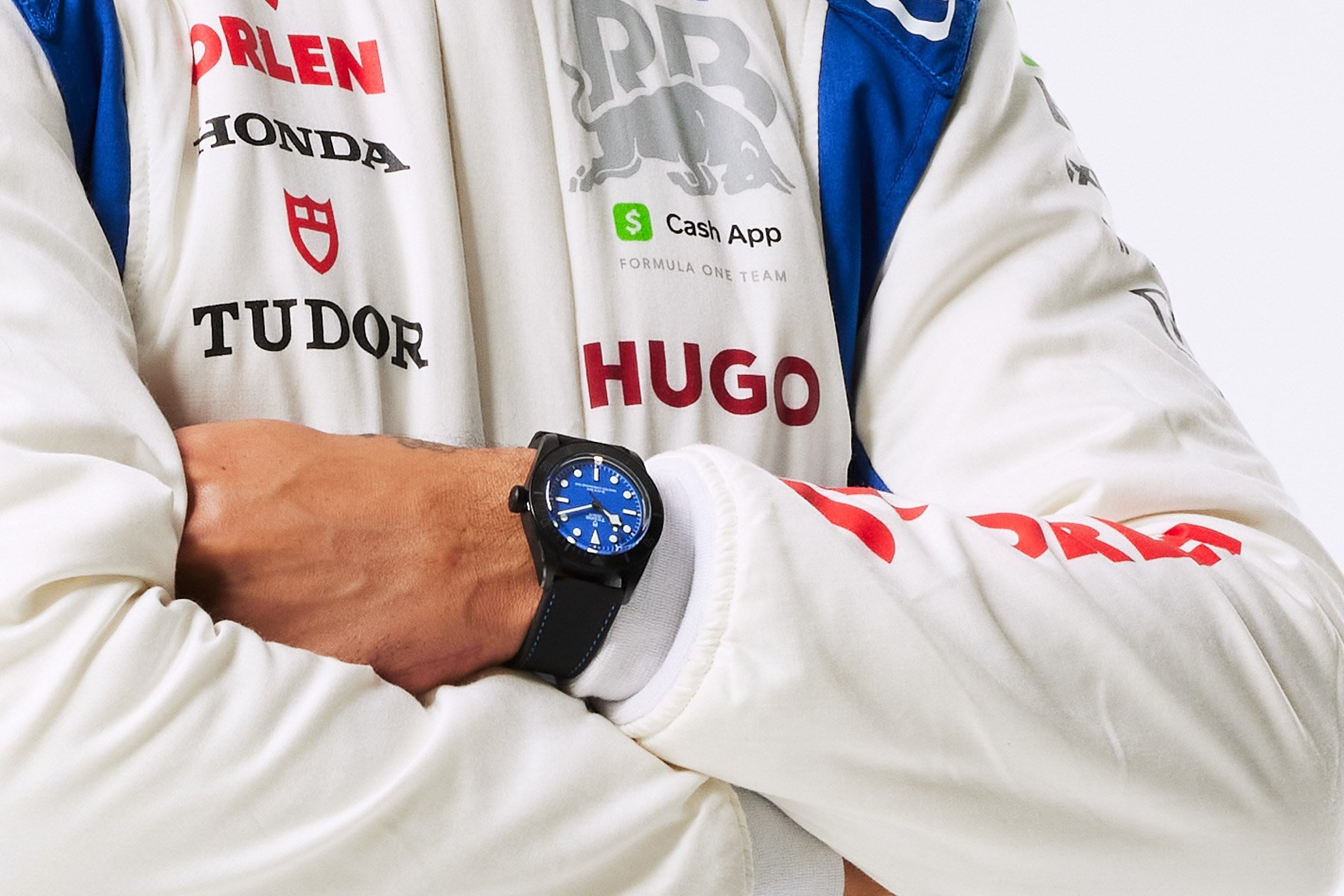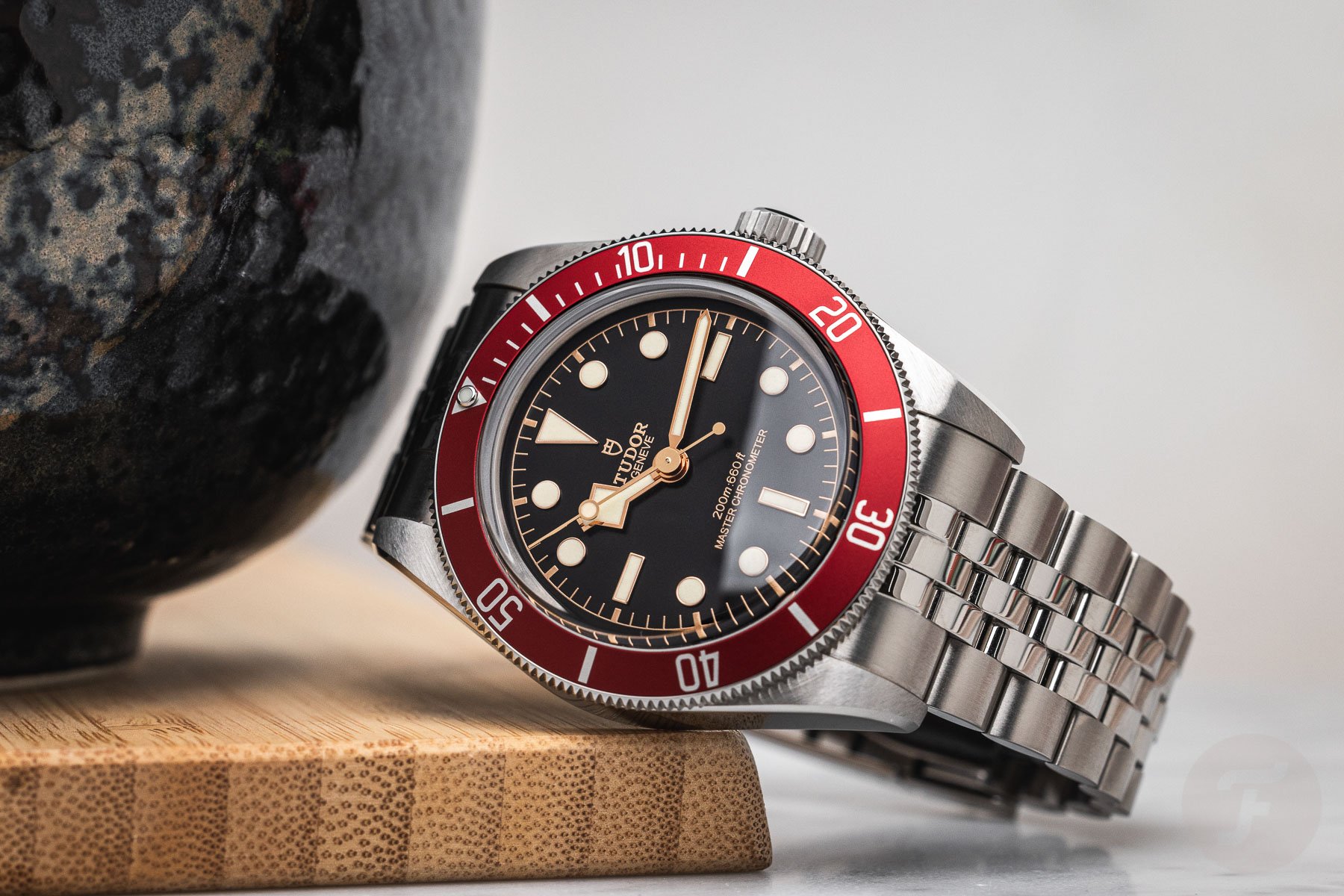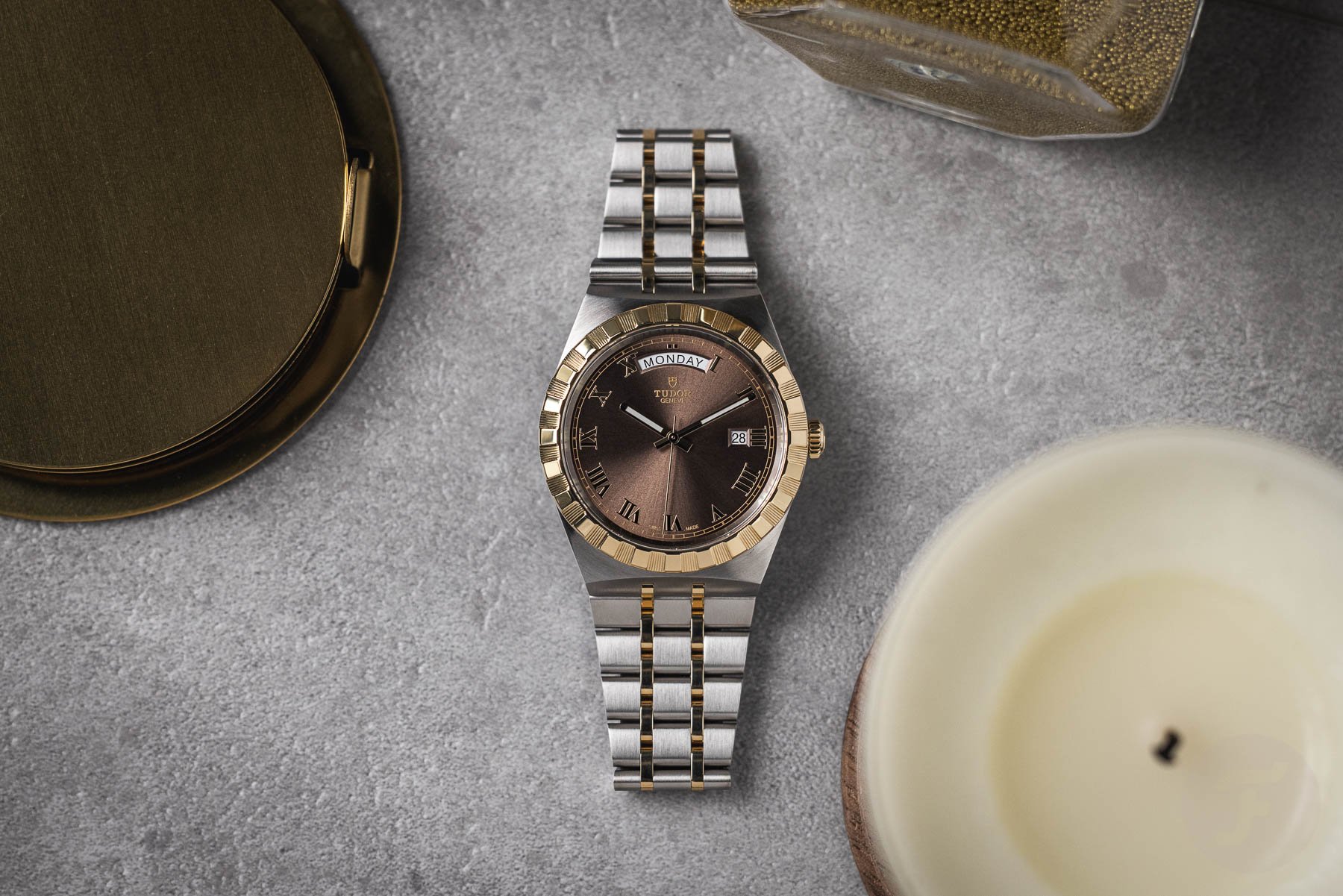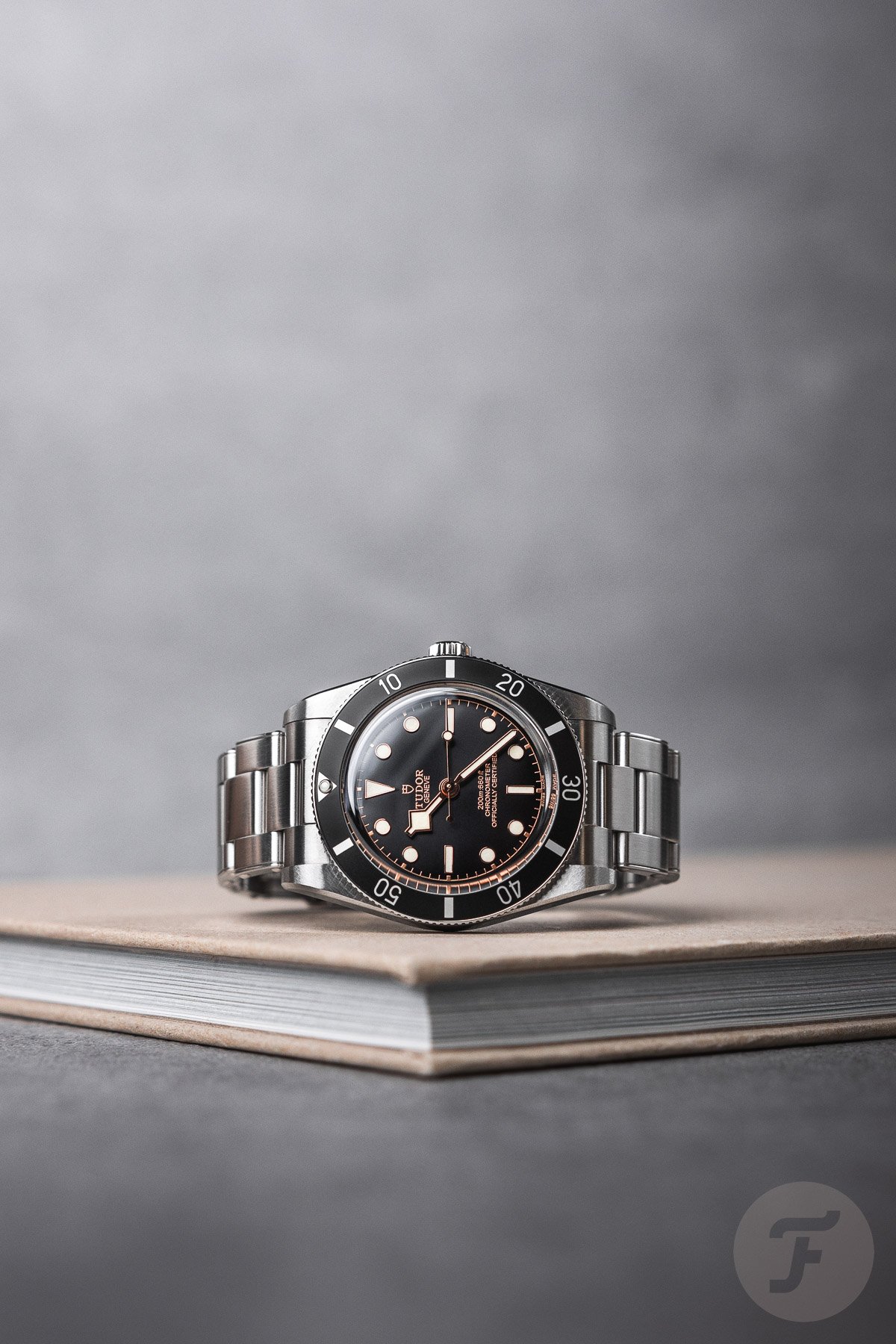What’s Next For Tudor? — Is It After Omega, Or Will It Take Rolex’s Former Spot?
The Tudor of today has a raised voice and speaks its mind loudly and confidently. It doesn’t look like the brand it was before 2012, the year in which Tudor launched the Black Bay, the foundation of the manufacture we see today. Seeing a retro-styled dive watch with a burgundy bezel at Baselworld was confusing in a way. How could an “airport brand” like Tudor suddenly have come up with a watch that perfectly captured the zeitgeist and awakened aficionados and collectors? The Black Bay revived the brand and marked the start of Tudor’s hot pursuit of stalwarts like TAG Heuer, Breitling, and Longines. Some think Tudor also has Omega in its sights. Or what about the theory that Tudor will take Rolex’s place now that “the Crown” is moving significantly upmarket?
In 12 years, Tudor has transformed from a maker of watches that no one — not even the brand itself — talked about to a brand that sponsors a Formula 1 team. The story of Tudor going from a neglected child to a relevant power player is a take on the Cinderella story. We all know fairy tales are fun, but they’re also not real. So, is the Tudor story a unique real-life soap opera with a happy ending, or is it a fairy tale people will stop believing in at a certain point?
What’s next for Tudor? Let’s first look at some numbers
As we know it today, Tudor uses bold and expensive marketing tactics to power an aggressive growth strategy that shows the brand operating well out of the shadow of its big sibling Rolex. During the dark era of COVID, Tudor’s star shone brightly. According to Jean-Philippe Bertschy, an analyst at Vontobel, an international asset management company with Swiss roots, Tudor “was one of the fastest-growing brands” during the pandemic amid an unprecedented boom in demand for Swiss watches. Furthermore, according to Bloomberg, the brand realized a 23% compound annual growth rate from 2019 to 2023 and reached sales of CHF 625 million last year.
These are impressive numbers. However, we also need to realize that steep rises are a thing of the past, not just for Tudor but also for the brands we suspect “the Shield” is competing within the marketplace. Breitling, for example, didn’t grow much last year. The brand only showed a 1% growth in sales, though volumes went down by 4%. TAG Heuer even saw a 7% decrease in sales. After a couple of years of steady and impressive growth, Tudor’s sales saw a 4% drop. And what about Omega, the brand some people in the business think Tudor wants to overtake? Well, Omega achieved a noteworthy growth in sales of 4% in 2023. Now what?
Back to life, back to reality
Perspective is everything. In the world of watches, perspectives are blurred easily by passion. Watch aficionados often suffer from tunnel vision. The hype surrounding Tudor, especially the retro-styled Black Bay models, is real, but all kinds of things go unnoticed. A plethora of watches are being bought by people who don’t care that, for instance, a particular dive watch of today resembles one from the past. So Tudor might be one of the fictive Top 3 brands catching the attention of watch fans, but when it comes to hard figures, it is not in the Top 3 of sales rankings by far. According to Morgan Stanley and LuxeConsult’s latest industry report, Tudor’s sales are only about 5% of Rolex’s sales — CHF 545 million (CHF 80 million less than Bloomberg’s quoted figure) versus CHF 10.1 billion.
The report also states that Tudor sold 255,000 watches last year, putting the brand in 17th place among the top 50 Swiss watch companies in 2023. TAG Heuer and Longines are ranked higher. Longines is seventh in the ranking, and last year, it sold 1.6 million watches with an implied average retail price of CHF 1,062. TAG Heuer is in 15th place, and the average retail price of the 390,000 watches it sold was CHF 2,228. Third-placed Omega is way higher on the ranking, having sold 570,000 watches with an implied average retail price of CHF 6,573. The average price of a Tudor watch last year was CHF 3,096 after steadily increasing over the last decade.
Rise!
Tudor is not just scaling up its marketing activities; things are also on the rise on the production side. In 2021, the brand opened the first industrial facility fully dedicated to Tudor in its 100-year history. The manufacturer is physically connected to the Kenissi factory, which started making movements in 2016. The production numbers have increased and, presumably, will continue to do so. An expansion of the current site or just building something completely new could also be expected in the future. Rolex did it, so why wouldn’t Tudor?
Another increase is the average 5% price difference of Tudor watches this year. As mentioned before, in 2023, the average retail price of a Tudor watch was CHF 3,096. That was much higher than Longines’s, a bit higher than TAG Heuer’s, and well below Omega’s estimated average retail price. But just like everything at Tudor, prices continue to rise. If the price curve progresses like this, a Tudor watch will first reach former Omega and eventually Rolex price territory. The key, of course, is building more watches that belong in a higher price segment. That means more high-end, complicated chronographs worn by charismatic athletes and fewer 26mm steel “airport watches,” although selling these without any marketing effort also doesn’t hurt.
After Omega and taking the place of Rolex
The 26mm Claire de Rose is not the watch that will push Tudor to the top. That role is for the many iterations of the vintage-inspired Black Bay and the contemporary Pelagos models. The sports watch is by far the most popular type of timepiece today, and with the world not returning to more formal attire, this will continue. With the brand’s watches on the wrists of pro cyclists, America’s Cup sailors, and Formula 1 drivers, millions of people are being confronted by the products Tudor makes. These are chic, casual, sporty watches that speak to the imagination and are exactly what people seek in a timepiece these days.
Tudor can do battle on the image front with Omega. This industry veteran has a long-lasting reputation for making quality watches at a luxury price. Tudor might be 98 years old and a veteran as well, but the rebirth of 2012 has given it the image of the new kid on the block. Call it “hype” or “urgency,” but Tudor is very relevant indeed. Yes, the sales volumes went down by 4% last year, but the brand still has plenty of momentum. The plethora of special editions Tudor keeps releasing is a sign of that. In a previous article, I wondered if Tudor was forcing its hand by putting out so many special, themed, and co-branded timepieces. Not too long after that article went live on Fratello, Tudor released a retail version of the black ceramic watch thought to be a Visa Cash App RB drivers-only watch.
Steady but with moments of hype
Tudor is after the younger generation, and that strategy seems to work. Aspiring watch fans who find Rolex out of reach seem happy to “settle” for Tudor instead of satisfying their needs with an Omega. By looking at the way the “Tudoristi” react to stories on their favorite brand and comparing it to how Omega fans express themselves, the non-scientific conclusion is that Tudor trumps Omega when it comes to passion and engagement.
The trick for Tudor is to perform a delicate balancing act between hype and steady mass appeal, to be relevant between moments of hype, and, in a way, to become like Rolex. This means having a rock-solid baseline with something extraordinary happening now and then to re-energize the brand and cause a spark in interest and a peak in sales.
Tudor is the new Rolex
Rolex used to be perceived as the prestigious maker of high-end tool watches. Nowadays, though, it symbolizes success and status. To many people, a Rolex watch is the very materialization of prestige and luxury. Tudor could very well replace Rolex as the producer of the ultimate gentlemen’s tool watches — do-it-all luxury timepieces for everyday use that offer the perfect balance of quality, functionality, and luxury.
Tudor having a shared history with Rolex will continue to lead to watches that consciously and subconsciously speak to people. Eventually, the number of those who are still struggling to see Tudor as something other than the “poor man’s Rolex” will diminish. And when that happens, possibly the Black Bay that stands on the shoulders of a giant (yes, the Rolex Submariner) or more likely, the Pelagos, a contemporary Tudor original, will become a veritable icon.
Just like Cinderella
Setting Tudor free was a stroke of genius by Rolex. It proved to be a Cinderella story. Now it’s just up to Tudor to stay popular and keep the image of the people’s queen, so to speak. Its humble origins can help achieve that. Tudor can become the queen of its watch domain, with Rolex as the king of the neighboring realm. And because there is a strong bloodline, the alliance is incredibly secure. Together, the Shield and the Crown can face any adversary and hardship. Tudor is a force to be reckoned with now and, seemingly, will be an even bigger one in the future.

